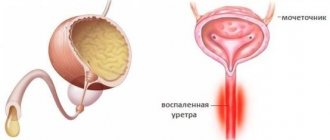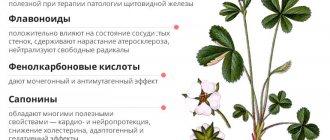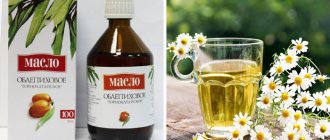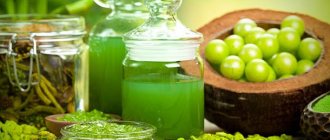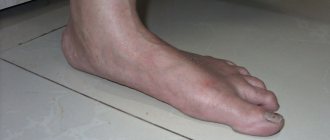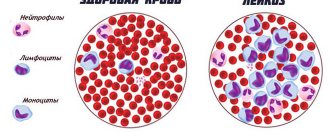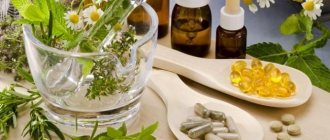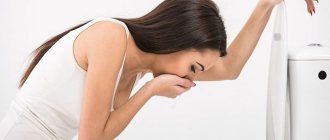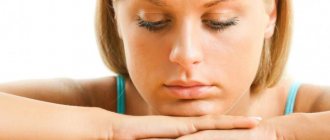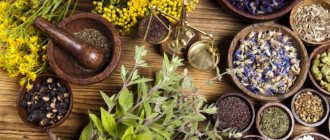First aid for hives
Treatment options for urticaria can vary. But there are situations and manifestations of the rash that require emergency care. Often we are talking about such an option as help to save a person’s life. It is clear that folk remedies will not help in such a situation and it is necessary to act with the help of medications.
Ambulance may be required in situations where we are talking about Quincke's edema and anaphylactic shock , i.e. when swelling in the throat develops very quickly, as a result of which the airways become blocked, and the person simply begins to suffocate.
Under the influence of histamine, vascular collapse also often develops, due to which blood pressure begins to drop and problems with blood circulation are noted. Against this background, oxygen starvation of the entire body, including the brain, develops. Often the result can be clouding of consciousness and fainting.
What should you do first in such a situation? Call an ambulance. The fact that urgent medical intervention is required will be indicated by:
- Redness and subsequent blue discoloration of human skin;
- Inability to breathe;
- Characteristic signs of a person who is choking: bulging eyes, protruding tongue, wheezing, etc.
The maximum that can be done before the doctors arrive is to lay the victim down and elevate his legs to increase blood flow, and therefore restore pressure. Doctors will stabilize the patient's condition with injections of adrenaline or prednisolone.
Drugs for treatment
Mostly, when it comes to drugs for the treatment of urticaria in adults, they are looking for something that will relieve itching and dry skin, and also reduce spots on the skin. When people ask how to cure hives, they mean what drugs can do it. Thus, in complex therapy the following are used:
- Antihistamines;
- Corticosteroids (they must be prescribed by a doctor);
- Sedatives – drugs that help relieve anxiety;
- Enterosorbents;
- Antipruritic drugs: for example, Fenistil-gel will perfectly relieve burning and itching.
Various ointments can be used to alleviate the patient's condition. It is quite possible to pick up an antihistamine ointment yourself - there are quite a lot of them in the pharmacy. Today the following options are used:
- Zinc;
- Salicylic acid;
- Nezulin;
- Fenistil.
As an option for traditional therapy for urticaria, you can also use natural-based drugs. When the question is: how to get rid of severe urticaria, you often hear the answer: using hormonal ointments. But such drugs must be prescribed by a doctor.
Folk remedies
For mild urticaria in adults, herbs can be used for treatment. Infusions, compresses, decoctions and ointments based on medicinal plants help to quickly get rid of the unpleasant symptoms of the disease.
They significantly reduce itching, soothe the skin, promote rapid elimination of histamine, and have a positive effect on the nervous system and sleep.
Attention! Acute urticaria with a severe rash, swelling of the nasopharynx, and attacks of suffocation requires urgent hospitalization. In this case, folk remedies can only be used to prevent relapse of the disease.
Compresses
For urticaria, it is recommended to apply cool compresses from fresh plant decoctions to the affected areas of the skin. The duration of the procedure is 10-15 minutes. To make a compress, you can use a thick bandage, gauze or cotton swab.
The course of treatment is prescribed individually; generally, sore spots are treated until the symptoms disappear. Effective recipes:
- Grind the dry string, pour 15 grams of the product with boiling water (half a mug). After half an hour, strain and soak the compress in the broth. Apply to itchy areas three times a day.
- Pour a handful of beans with 500 ml of cold water and place on low heat for 1.5-2 hours. Use the decoction for rubbing or compresses 3 to 7 times a day.
- Brew a mixture of 30 grams of birch buds and leaves with 100 ml of boiling water and leave for an hour. Wet the swab and apply to the skin every 12 hours.
- Take 15 grams of fireweed leaves per glass of water and simmer for 10 minutes. Apply lotions three times a day.
- Brew wormwood (30 grams per 150 ml), strain after 40 minutes. Add about a glass of flour to form a soft cake. Apply to affected areas 2-3 times a day.
- If there is severe itching, grate raw potatoes, squeeze, and soak gauze in the juice. After removing the bandage, wash the skin with clean water.
- Take an equal amount of fresh plantain and yarrow leaves, chop finely and wrap in gauze. Apply a compress to severe irritation up to 4 times a day.
- You can quickly relieve itching with dill. It should be finely chopped, squeezed out the juice, and moistened with a cotton swab, applied to the itchy area until relief occurs.
- Peel fresh beets, cut into cubes and add clean water (1 to 5).
Place the container in a warm place for 5-7 days. After the specified time, strain. Use 15 ml before bed as a compress or orally. - If your hives are not caused by cold, you can use ice to relieve the itching. Use a small cube to wipe the affected areas or use crushed ice, first wrapped in a bandage.
Advice. It is not recommended to use the same recipe for more than 2 weeks. If the urticaria does not go away, you need to change the remedy.
Baths
Baths made from decoctions of medicinal plants are very effective. For acute urticaria, the procedure should be carried out in the morning and evening, for chronic urticaria - once a day.
The duration of the procedure is from 10 to 20 minutes.
Recipes:
- Grind the burdock root, add cold water (100 grams per 500 ml of water), put on fire for 15 minutes. After cooling, strain and pour into the bath.
- Mix in a large container 3 tablespoons of oak bark, string, sage, chamomile, celandine, juniper, valerian roots, elderberry and nettle.
Pour the mixture with about a liter of water, boil for 15 minutes, strain after half an hour. All plants can be brewed individually. - Brew wild rosemary shoots with boiling water (100 grams per 0.5 liter), leave for 3 hours. Add to a warm bath.
- Pour boiling water over linden blossom and chamomile flowers (100 grams per 0.5 liter of water), let it brew for an hour. Well soothes irritated skin.
- Pour 200 grams of marjoram leaves and flowers into 2 liters of boiling water and let it brew for 3-4 hours. Can be used for both small baths and large baths.
- Take 500 grams of pine cones for 2 liters of water and simmer over low heat for half an hour. After straining, add to a warm bath.
- Mix 5 tablespoons of St. John's wort flowers with the same amount of rosehip leaves, brew with 2 liters of boiling water. After 3 hours, the broth can be used for taking a bath. The recipe is especially effective for hives caused by cold.
- Wash the nettles along with their roots thoroughly, chop them and add water (200 grams per liter). After boiling for 5 minutes, cool, strain, pour into the bath. The decoction can be used for internal use (50-100 ml three times a day).
- A bath made from a mixture of chamomile flowers, mint leaves and valerian root helps relieve itching and help you get ready for sleep.
All herbs should be taken equally (200 grams in total), pour a liter of boiling water and cover. After cooling, strain. You can take a third of a glass orally.
Advice. A large amount of herbs is used to prepare baths. To prevent treatment from costing you too much, you can collect and prepare plants yourself.
Creams, ointments
Viscous products act on the skin longer than lotions. It is recommended to store them in the refrigerator for no longer than a week. Most often used for recurrent, chronic urticaria. Recipe options:
- Add 50 grams of dried St. John's wort flowers to 100 ml of unrefined sunflower oil and place in a water bath for an hour. Leave for several days in the refrigerator. Lubricate the affected areas after the bath. Shake before use.
- Crush fresh cranberries. Combine the resulting juice with pharmaceutical Vaseline in a ratio of 1 to 3. Use three times a day.
- Take finely chopped Kalanchoe leaves, add the same amount of honey, mix thoroughly, leave for 7 days in a warm room. Avoid direct sunlight. Use the ointment morning and evening. Kalanchoe can be replaced with aloe.
- For cold urticaria, the skin can be lubricated with boiled olive or sunflower oil.
The first time a folk remedy should be used very carefully.
The composition should be applied for 1-2 minutes. If there is no negative reaction within 24 hours, then this recipe is suitable for you.
This video will tell you how to treat hives with folk remedies:
Products for internal use
When you have hives, you need to solve the problem from the inside. To quickly remove histamine, you can drink diuretic herbs, to improve digestion, a decoction of oats, wheat bran or flax seeds, to support the liver, dandelion roots, milk thistle fruits.
Most plants should be brewed as tea (a teaspoon per cup of boiling water). The dose should be taken three times a day, before meals. The duration of treatment is from 2 weeks to a month.
Effective recipes:
- Mix birch leaves, rose hips, chamomile flowers. Prepare and take as tea.
- Wash the dandelion roots, chop finely, and simmer for 10 minutes over low heat (a handful per glass). Drink 30 ml three times a day.
- Grind the blackcurrant leaves, brew and let it brew for a couple of hours. Drink a quarter glass before each meal.
- Prepare a mixture: immortelle, mint, tansy, St. John's wort, clover. Brew a tablespoon of the product with boiling water and drink instead of tea.
- Grate fresh celery and squeeze out the juice. Drink a teaspoon fresh in the morning and evening.
- Wash the raspberry roots and chop them. Add 30 grams of product to 300 ml of boiling water and boil for 15 minutes. Wait for the broth to cool, then strain. Take 250 ml before meals.
- Brew a tablespoon of yarrow (leaves), strain after cooling. Divide a glass of decoction into three doses.
- To treat nervous urticaria, dissolve 15 ml of valerian and hawthorn tincture in 100 ml of water. Drink an hour before bedtime.
- Grind the licorice root, take the product into a teaspoon, chew it, and drink plenty of water. Take morning and evening.
- Grate the horseradish root and squeeze out the juice. Before use, dilute with honey. Reception – 3 times a teaspoon.
- Brew dry mistletoe like tea and leave for 10-14 hours. Drink a third of a glass in the morning on an empty stomach.
- Pour passionflower tincture into a glass of water (30 drops) and drink in one gulp. Take three times a day.
- Make a mixture: birch buds, chamomile and St. John's wort flowers, rowan fruits, rose hips, dandelion roots, stevia herb, strings, mint, violets and strawberries. Brew as tea, take morning and evening.
Advice. To improve the taste of decoctions, you can add linden, mint, and chamomile to recipes.
Treatment rules
Acute urticaria usually lasts a week after the inciting factor is eliminated. However, for several more months the body may react acutely to any allergens (red fruits and vegetables, sun, cold, medications, etc.).
To avoid relapse, you should adhere to the following rules:
- Wear clothes only from natural fabrics.
- At the beginning of treatment, adhere to a strict diet.
- Introduce new foods gradually (1-2 weeks after symptoms subside).
- Avoid nervous tension and stress.
- Drink enough water (1.5-2 liters).
- Make sure your bowel movements are regular.
- If you feel worse, consult a doctor.
Urticaria will go away faster if you take Activated Carbon, Phytosorbent, Polysorb, and Smecta together with folk remedies.
For unbearable itching, any antiallergic drug will help - Suprastin, Tavegil, Diazolin, Diphenhydramine.
How to treat hives at home, watch this video:
Types of diseases and how to deal with them
Urticaria comes in different shapes and types. And the choice of therapy depends on this. So, for example, if we are talking about a problem such as urticaria, external treatment options are used. These can be not only ointments, but also herbal infusions.
Simply brew a bag of chamomile or a tablespoon of string or calendula, leave the herbal infusion for an hour, and then, when it cools down, wipe the skin with cotton pads. This measure will relieve inflammation and quickly eliminate inflammation. After all, all these herbs have a high and proven anti-inflammatory effect.
There are several types of urticaria:
- acute;
- chronic;
- pseudourticaria.
Chronic and acute urticaria, respectively.
The treatment options for each differ, mainly based on the cause of the disease. After all, therapy should begin with eliminating the allergen. Antiallergic drugs and symptomatic therapy are then used to eliminate symptoms. The exception is pseudourticaria.
The latter is caused by diseases and various mechanical factors. This means that you should clearly establish the cause of the rash and act on it, then the spots will go away on their own. Only symptomatic options can be used as therapy.
Acute urticaria
Various foods are widely used to treat urticaria. Celery is great for treating hives. The root of the plant is used to prepare a medicinal infusion.
It should be crushed, squeezed and drunk 30 minutes before any meal. Alternatively, you can prepare an infusion. To do this, pour the crushed roots with water and leave to infuse for a couple of hours. This infusion is filtered and then drunk 1/3 glass before meals.
- If the cause of rashes due to urticaria is stress, you should consider taking sedatives. This could be valerian and hawthorn. It is enough to use pharmacy tinctures, mix them in a glass with water, 30 drops each, and drink before bed. Use this infusion internally for at least 10 days.
- If you suffer from itching, which intensifies regularly, you should use the following option - hot baths with the addition of soda. You should take a bath according to the following scheme: for a small bath you should use a cup of soda, and for a large bath a couple of cups will do.
- If there are many rashes on the body, to speed up recovery, you should wipe yourself with water and vinegar or tomato juice. Plants must be taken carefully. After all, they themselves can also be tangible allergens.
Allergic urticaria is treated primarily by avoiding contact with the allergen. Only after this can we hope for a cure. At the same time, symptomatic therapy should be carried out - wipe the skin and lubricate it with ointments and infusions for rashes and itching.
Useful foods for hives
With urticaria, the main key to recovery is proper nutrition and diet (even if the disease is caused by physical factors). In case of food or drug urticaria, you should exclude the product or drug that caused the allergic reaction. A separate diet is used for each age category.
Basic principles of diet for a one-year-old child:
- If the baby was given bait, then it should be completely canceled during the illness. You can feed him only with formula milk (it is better to choose a hypoallergenic one) or mother's milk, who must adhere to a diet.
- If the child has eaten full-fledged “adult” food (at least 4-5 times), then it is worth giving baby formula or breast milk for dinner.
- During an illness, a child is prohibited from adding foods that are new to his body (this applies even to those foods that are not allergic in themselves).
A diet that older children and adults should follow.
So, you need to eat:
- boiled lean meat (chicken, rabbit, beef);
- boiled potatoes in water without fatty dressings;
- porridge (wheat, oatmeal, buckwheat, rice are best) and pasta;
- soups cooked without meat broth and without frying;
- low-fat dairy and fermented milk products (necessarily without additives and fillers);
- steamed, boiled or stewed vegetables;
- whole grain, rye bread, with bran and seeds;
- greens: lettuce, parsley, dill;
- tea (preferably not sugared or with added fructose, definitely not fruit);
- vegetable oils;
- biscuits.
As the rash goes away, other foods can be added to the diet, but in this order: first add green and yellow vegetables and fruits, then you can add orange ones, and at the very end you need to add red fruits and vegetables. This is the first stage. At the second stage, the patient can be given boiled fish, onions (fresh), freshly prepared juices, white bread, fruit purees and compotes.
Traditional medicine for urticaria:
- 1 you need to lubricate the rash with St. John's wort oil;
- 2 drink decoctions of string, chamomile, burdock root, oak bark, oak bark, you can also take medicinal baths with them (it is important to remember that the affected areas of the skin are more sensitive, so the water temperature should not be high);
- 3 every morning drink an infusion of dried walnut leaves;
- 4 before meals (half an hour), take a teaspoon of celery root juice (the juice should be freshly squeezed).
Dangerous and harmful products for hives
You should exclude from your diet:
- seafood;
- dishes and food products with food additives, dyes, thickeners, code “E”, flavorings;
- eggs;
- nuts;
- chocolate;
- red fruits and roots;
- herbs and spices;
- sweet sodas and alcoholic drinks;
- honey and its by-products (propolis, wax, bee jelly);
- fish (you cannot eat the first week after the rash, then you can gradually introduce fish, but only fish of low-fat varieties and steamed, or boiled).
Reduce the dose of sweet, starchy and salty foods.
Attention!
The administration is not responsible for any attempt to use the information provided, and does not guarantee that it will not harm you personally. The materials cannot be used to prescribe treatment or make a diagnosis. Always consult a specialized doctor!
Tatyana Eliseeva chief editor of the Food+ project
Ask a Question
Rating:
10
/10
Votes: 3
Usefulness of material 10
Reliability of information 10
Formatting of Article 10
Why is it important to establish the cause?
It is very important to determine the cause of the problem. After all, this is the only way to cope with the problem and get rid of the risk of relapse. It is advisable to conduct a full diagnosis, and this is best done by a specialist. To determine the reasons:
- donate blood;
- carry out allergy tests;
- keep a food diary.
Based on the results of all observations and identification of the causes, a treatment regimen is developed. If you do not establish the cause, but only engage in symptomatic therapy, the disease will regularly progress and manifest itself - each time it will become stronger and more severe.
What are the main folk methods used?
Treatment of urticaria at home in adults is often prescribed using traditional medicine.
Lamia flowers
In addition to celery root, you can successfully use an infusion of white nettle (also called dead nettle). To prepare the infusion you need to take 4 tsp. per glass of boiling water. Leave for several hours and then apply to the skin. The effect will be noticeable in a couple of hours.
Uses of yarrow
Yarrow infusion is widely used as a treatment for urticaria. To make lotions or use internally, you need to take a tablespoon of the herb and pour boiling water over it - a glass is enough. It should be infused for 45 minutes. You should take the product 0.3 cups three times a day before meals.
Pharmacy tinctures
Various pharmacy tinctures will also be an excellent solution. A mixture of hawthorn and valerian tincture will help with hives. Take:
- prepared hawthorn tincture
- prepared tincture of valerian
Mix them in equal proportions and take 15 drops before bed - the tincture must first be diluted with water.
Herbal infusions
Various herbal remedies will also help with itchy rashes. For example, a collection of herbs such as:
- celandine;
- series;
- St. John's wort;
- chamomile;
- valerian.
All ingredients should be mixed in equal proportions. Pour 5 tablespoons of this mixture into a liter of water and put it on the fire to boil for 10 minutes. After boiling, leave for 40 minutes. This option can be used as a lotion or as a bath additive.
Another combination of herbs you can mix:
- mint;
- tansy;
- St. John's wort;
- immortelle.
This treatment option is used for chronic urticaria. Mix all herbs in equal proportions. Take 2 tbsp. means and pour boiling water - 300 ml. The decoction is infused for 30 minutes. You should drink 150 ml three times a day before meals.
Grated potatoes
You can also use grated potatoes as a means of therapy. Starch and root juice will soothe irritated skin and provide antiseptic treatment.
Nettle treatment
And, of course, an important means of therapy is nettle for urticaria. After all, such a plant has many beneficial properties and shows high effectiveness in treatment. Nettle helps:
- eliminate itching;
- removes allergens;
- soothes the skin.
Nettle can be used both as an infusion and as a lotion. It is enough to brew a tablespoon of nettle with boiling water. It is advisable to wrap the solution and let it sit for half an hour. Strain before use. Take 100 ml of this product warm. Frequency of use – 5 times a day.
Nettle can also be used as tea . A tablespoon of herb per cup of boiling water is enough. To enhance the taste, you can add a spoonful of honey.
Alternatively, you can take a steam bath with a nettle broom. This method will help cope with allergies many times faster.
Urticaria symptoms, causes and treatment
The disease urticaria is characterized by a rash on various parts of the skin, the appearance of blisters, and a rash. In appearance, the rash is similar to a burn from nettle grass, hence the name urticaria.
The appearance of hives may disappear after a few hours without treatment. Less commonly, the disease becomes chronic; at the time of exacerbation, an elevated temperature appears, and the general condition becomes worse. A large number of blisters on the larynx causes coughing and suffocation.
If there is illness, chronic urticaria lasts a long time. Urticaria should be treated by a specialist. At home, treatment for urticaria is carried out with soothing herbs and herbs.
According to ancient books, for any hives you need to empty your stomach and take a laxative. For at least a week after an exacerbation of urticaria, eat plant-based, light foods.
Is it possible to treat urticaria with folk remedies in pregnant women?
Pregnant women should be very careful when using folk remedies when treating urticaria. After all, in most of them it develops against the background of hormonal changes. This means that herbal therapy can give unpredictable results. In addition, many herbs, especially when taken orally, can be dangerous for a pregnant woman. For example, the same nettle - it causes the tone of the uterus, which is fraught for the fetus and the entire pregnancy as a whole.
Urticaria is an unpleasant disease that deprives a person of his ability to work. Therefore, it is definitely worth fighting with him. Moreover, it is important to understand that therapy with folk remedies has a right to exist, but only as an additional treatment. You can't make it the main one. And for each prescription you should consult a doctor so as not to harm your health.
Folk ways to combat the disease
If there is no desire or opportunity to consult a specialist, proven traditional methods of treating urticaria almost always come to the rescue. The best way to get rid of the disease is to identify the allergen and eliminate it.
Very often, traditional methods of treating urticaria are even more effective than medications, since there are practically no contraindications for their use. But still, it is better not to self-medicate, but to first consult a doctor.
There are a lot of folk remedies for urticaria, here are some of the most popular.
- Nettle. Oddly enough, the most effective folk remedies for treating urticaria are prepared from nettle. Pour a tablespoon of nettle flowers (dry or fresh - it doesn’t matter) into a glass of boiling water, cover, let it brew for half an hour, strain and drink 4-5 times a day, half a glass.
- Nettle. Pour 30 g of nettle leaves with water (500 ml), put on fire, boil, then another 3 minutes. cook over low heat. After this, let it brew for 1 hour and strain. Use randomly as a lotion several times a day.
- Nettle. Place stinging nettle directly with the roots in a saucepan, add water, put on fire and cook for 5 minutes. boil. You need to bathe in the resulting broth several times. To enhance the effect, you can drink the same decoction 1/3 cup three times a day before meals.
- Eggshell. It will be nice if you infuse eggshells in the water for a liquid dish a day before cooking. To do this, you need to remove the shell from two dozen boiled eggs, put it in a 3-liter bottle and pour boiling water over it. It is recommended to wash your face with the same water.
- A series. To treat urticaria using folk methods, especially in cases of chronic disease, it is recommended to use tincture of succession instead of tea and coffee. Moreover, this should be done not just once, but regularly. In a glass of boiling water for 20 minutes. infuse the herb and drink without dosage exclusively fresh. The liquid should be golden in color, but if it is greenish or cloudy, then it is unsuitable for consumption.
- Honey and apple cider vinegar. You can make it a rule to drink a mixture made from honey and apple cider vinegar at night in a ratio of 2:1, respectively. Use until complete healing.
- Melissa and valerian. Grind and mix in equal proportions (20 g each) hops, lemon balm herb and valerian root. Pour a tablespoon of this collection into a glass of boiling water, leave for 3 hours, strain and take three times a day, 1/3 cup daily.
